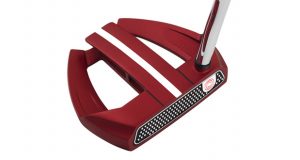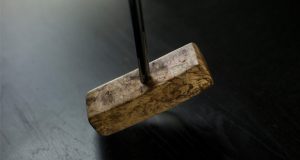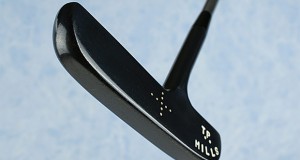At PutterZone.com, we have made it our vocation to help demystify the jargon that surrounds putters and putter fitting.
On that note, we noticed a bit of jargon misuse in the latest issue of a major golf magazine: “Last year Oosthuizen wanted a face-balanced Redwood Anser (the club is typically heel-toe balanced), so PING built him one with a Z-band shaft (ie: with no hosel that goes right into the clubhead) to achieve that. Although Oosthuizen used the putter for eight months, including his win earlier this year in Spain, he wanted a long-neck version. PING built the putter (which features a hosel nearly twice as long as on the production model) at its Wrx shop in Phoenix and sent it to Oosthuizen, who put it in the bag two weeks before his win at St. Andrews.”
(There is no need to specify the magazine—our intent here is to inform, not embarrass. Nobody’s perfect, including us, and we just see this as yet another opportunity for demystification.)
There are two issues with the aforementioned statement. For starters, there really isn’t such a thing as “heel-toe balanced.” Also, the statement makes it sound like the type of hosel or shaft connection is primarily responsible for the balance of the putter, when it is, in fact, only part of the story.
The Anser putter and other Anser-style putters are heel-toe weighted, not heel-toe balanced. The Anser is heel-toe weighted because the bulk of the head’s weight is located along the heel and toe of the putter (see above photo). No matter how the putter is balanced or how the shaft is connected (hosel or no hosel), the head design itself does not change.
There are two general categories of putter balance—face balanced and toe hang, with the latter falling into varying degrees (click here for a more detailed look into putter balance). What determines a putter’s balance is where the axis of the shaft (ie: where the shaft points) lies in relation to the head’s center of gravity. When the axis of the shaft is in direct line with the head’s center of gravity, the putter becomes face balanced.
This is why PING was able to turn Ooshuizen’s heel-toe weighted Anser into a face-balanced putter. By mounting a Z-bend shaft in line with the center of gravity, or by extending the traditional hosel so that the shaft is in line with the center of gravity, you go from toe hang to face balanced.
To review: A heel-toe weighted putter typically has toe hang, but it can also be face balanced. A putter’s balance is determined by the axis of the shaft and its relation to the head’s center of gravity. And a variety of hosel types and shaft connections can be used to alter the axis of the shaft.
P.S. For additional putter fitting insights, check out PutterZone.com’s Ultimate Putter Buyer’s Guide.
 PutterZone – Best Putter Reviews
PutterZone – Best Putter Reviews



